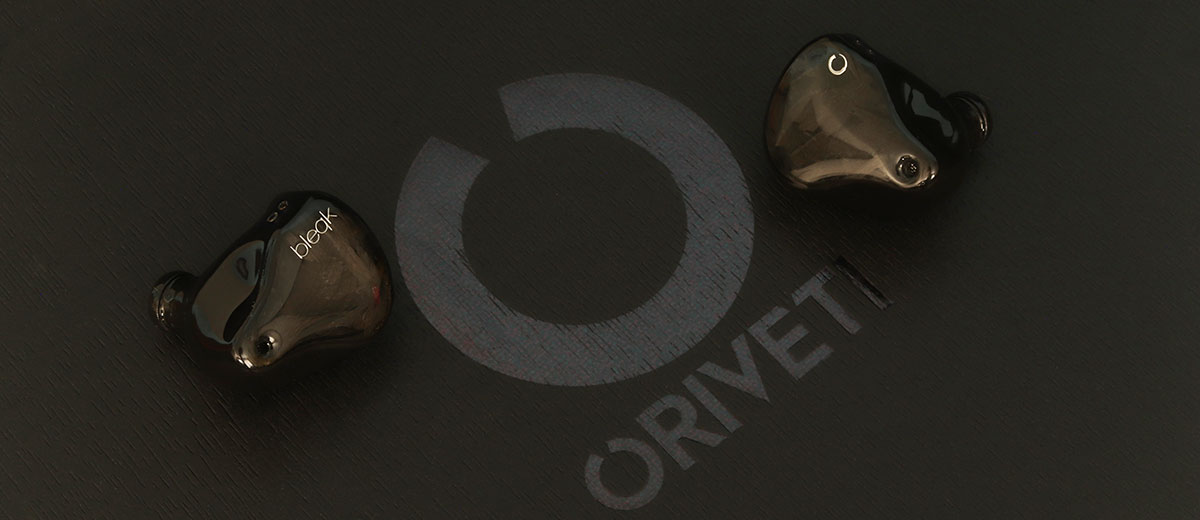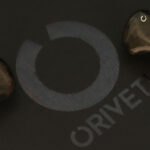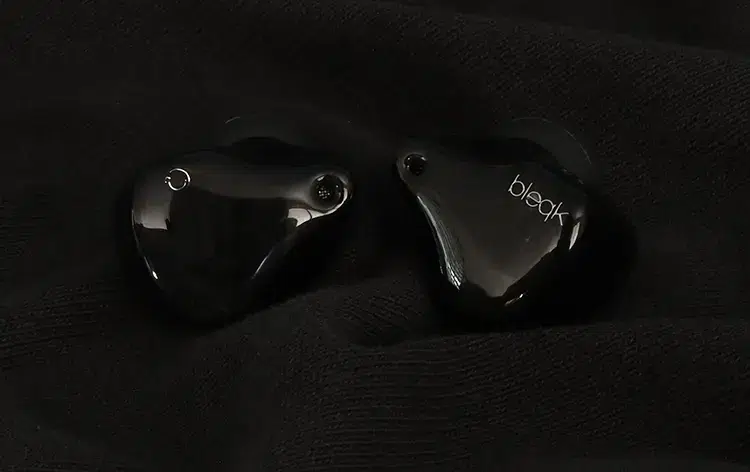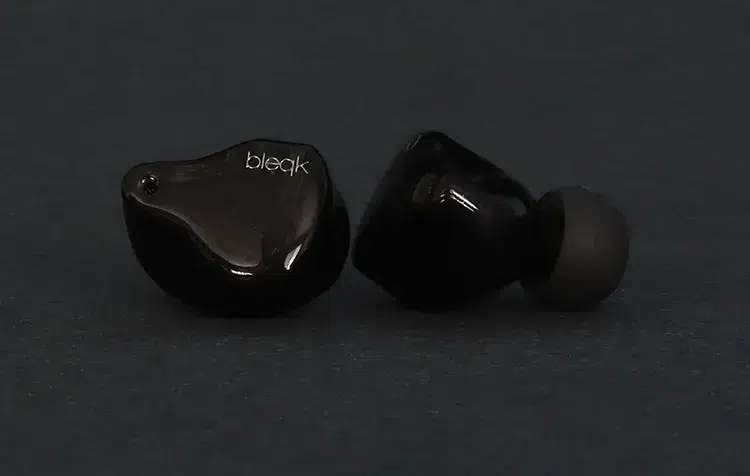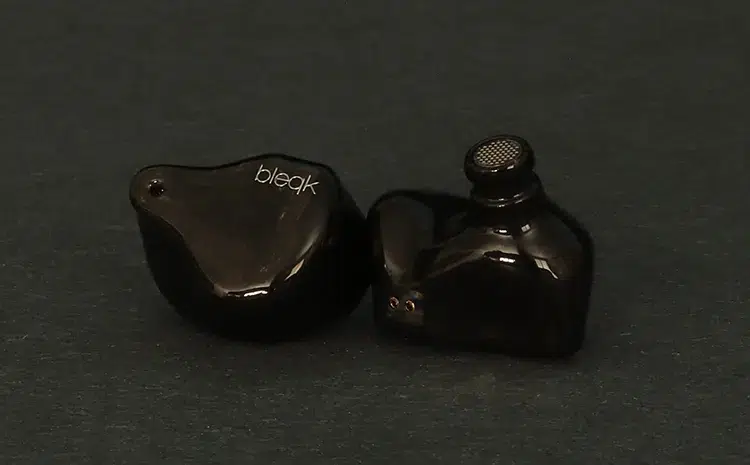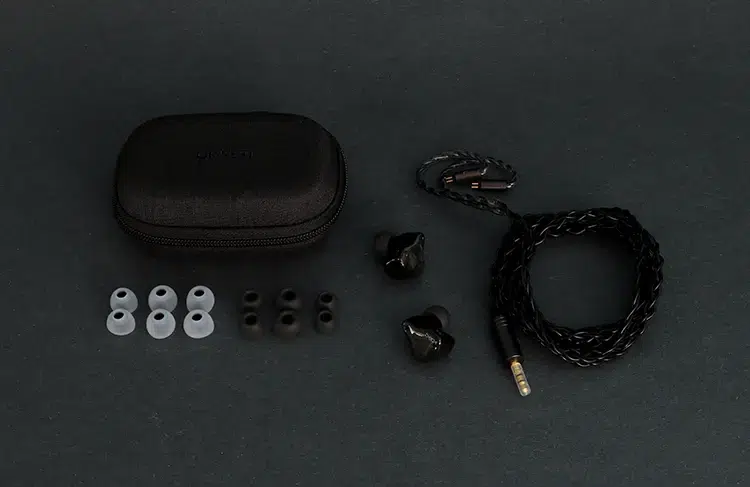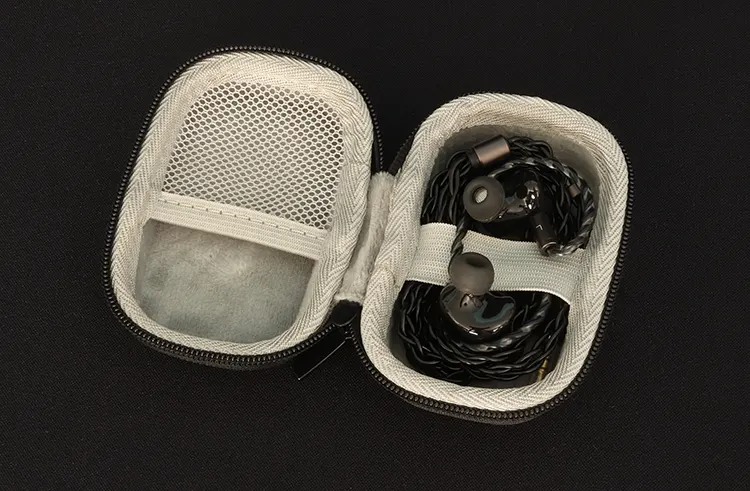In this feature, Louis reviews the ORIVETI bleqk Lowmaster, an affordable hybrid dual BA and single 10mm dynamic driver IEM priced at $149.99.
Disclaimer: This sample was sent to me in exchange for my honest opinion. Headfonics is an independent website with no affiliate links or partnerships. I thank the team at ORIVETI for their support.
Click here to read more about the ORIVETI products previously reviewed on Headfonics.
This assessment follows our current scoring guidelines, which you can read in more detail here.
The new bleqk line of IEMs from ORIVETI is a budget line that promises top performance per dollar. This ORIVETI line of IEMs is aimed at the budget-conscious buyer. Presently, the line consists of two models, and eventually, we will cover both, so stay tuned.
We recently covered their excellent and opulent-sounding Grand ORIVETI Supremacy, but we also covered some of their other budget models like the OD100 and the OD200, the BASIC, and the Primacy. You can say that we’re working on an ORIVETI Master’s degree here.
Today’s model in review will be on the bleqk Lowmaster, but that name could veer some into thinking that the Lowmaster is some sort of bass canon or a bass head IEM, but that’s not so, in my honest opinion. This one is quite balanced and a pleasant surprise in this price range.
Features
Following in the footsteps of the OH300, the Lowmaster is a tribrid hybrid IEM rated at 16Ω with an SPL of 106+-3 dB/mW,
It features a three-way, three-driver configuration, one for each of the major frequency bands: bass, midrange, and treble.
Two balanced armature drivers handle the midrange and high frequencies, while a third single 10mm composite dynamic driver is responsible for producing the bass region.
A quick peek at the frequency graph posted by ORIVETI and the bass seems notably flat-lined with no dip in the lowest region.
One interesting point that was noted is the 5Hz low-end capability. Most Budget IEMs by ORIVETI spec out at up to 20Hz and don’t go below that. Perhaps that’s why ORIVETI labeled this particular IEM the Lowmaster.
Precision tuning is the phrase used by ORIVETI, and the name Lowmaster doesn’t quite fit this IEM because it produces decent bass, but the tuning is well-balanced in general.
The bass is not emphasized, but it does sit a couple of decibels over the mids. But in general, I would label this IEM as detail-oriented.
Design
The advanced 3D-printed resin shells wear carbon fiber backplates, according to ORIVETT, but I just see fibers and not the familiar and common carbon fiber basket-weave pattern.
The artistic pattern on these back plates seems very faint and is only visible at certain angles and in certain lighting conditions. The general color scheme of the resin shells seems to be black.
These shells feel like butter in your hands, and they give me a sense of melting in my hands because they are super smooth, highly polished, and glossy. The shells are seamless and polished down to the output nozzles.
The shells are not very large and have a minimum amount of girth for being a hybrid multi-driver IEM.
They’re small-sized IEMs that use a universal fit shape with what looks like a grated air vent and 0.78mm dual-pin connections. They also wear perforated metal grills on the tips of the output nozzles.
Comfort & Isolation
The bleqk Lowmaster isolates well and are very comfortable, but I had to play with the insertion angle and tilt them forward a few degrees to get them to seat correctly within my ears. It was the only way I could get the correct amount of bass.
That’s the only issue I had with this IEM, and it seems that the main culprit is not the IEM shell and the output nozzle angle so much but the tip selection.
The Lowmaster IEM can be worn for hours with little to no discomfort, or at least, that was the way for me. I just seem to have that particular quirk in that I have to play with their position to get a good seal.
Ear Tips
Contrary to the Grand ORIVETI Supremacy, the Lowmaster is very sensitive to tip selection, and I had a hard time finding the right tips for this IEM. Of the two sets included, I preferred the silicon variant because they produced the best seal.
Since the stock selection is limited, I went digging into my collection of tips, which is a small box full. I found a couple of sets that worked. Long white silicon tips from HIFIMAN worked. Foam tips also worked well.
This IEM highly depends on a tight seal for the bass response, in particular, to flourish. A poorly selected tip kills the bass in this set, and it takes some finessing of the shell to get things right, but it’s well worth it at the end.
Stock Cable
The stock cable is okay at this price range, and I didn’t expect a lavish cable assembly. It has nice-looking hardware, especially the 3.5mm connector, which is all metal, black anodized, and sports a gold-plated TRS tip and a bleqk branded body.
The ear hook shape is present,t but it’s a one-size-fits-all type and has no adjustability, just pliability. I doubt the ear hooks will present any discomfort for you because the insulation material is made of a very soft rubber, perhaps silicon.
The cable is a four-braid cable that’s insulated with soft rubber, and it has good noise cancellation properties, but the cable tends to feel tacky.
This might be a benefit in some situations. The cable splits at the adjustable chin strap, and beyond that is composed of a two-wire twisted pair up to the 0.78mm connectors.
Packaging & Accessories
For a budget IEM, the ORIVETI Lowmaster comes with a budget amount of accessories. It does come with a nice carrying case that’s well-padded and seems to be well-made. It proudly wears the ORIVETI name embossed on top.
A total of seven tips are included. One set is preinstalled. You get three sets of black tips and three Silicon tips, which were my favorite in this set. Since this set is tip-sensitive, I wished it would come with more tips.
There’s no literature included with this set, but it’s not needed. The packaging is utilitarian and is all made from colored cardboard, but since the IEMs and the cable come within the carrying case inside the box, they are assured to arrive safely.
Sound Impressions
I tested the Lowmaster with a variety of gear, starting with the FiiO M11 Pro on music mode, the iFi audio xDSD Gryphon to test the set with a bass boost option, and the ONIX Alpha XI1 on a Motorola Edge.
I also tested the Lowmaster with the SMSL D10, Shanling’s H2, and iBasso’s DC06.
Summary
The ORIVETI bleqk Lowmaster produces a slightly warm and engaging sound signature characterized by deep bass, smooth, detailed midrange, and a smooth treble response. They produce a non-fatiguing listen in general.
But the one characteristic that grabs you is the amount of detail that the Lowmaster can produce, especially around the midrange frequencies. It’s tuned for listeners who prioritize a nuanced listen along with a rich tonal balance.
The Lowmaster produces a layer of musicality over another layer of analytical precision. It plays out, no pun intended, a balancing act between sterility and fun.
There is a small U shape in the sonic signature here, but a very wide stretch that doesn’t veer the overall signature into one that doesn’t emphasize bass over everything else. It’s a balanced U shape. Yes, a weird statement.
Bass
The bass response of the Lowmaster is slightly elevated compared to the upper mid frequencies in output by a few decibels and can be seen in the frequency response graph posted by ORIVETI.
The Lowmaster’s bass is effective down to 15Hz audibly, and below that point,t it becomes ineffective quickly, which is more than appropriate to produce the lowest of tones and covers most people’s audible capability.
The bass is quite linear in response, but the small rise over the mid-frequencies gives this IEM an overall warm tonality.
The Lowmaster lives up to its name by providing deep, resonant low frequencies and is capable of producing bass with a medium amount of speediness and tightness. The bass driver is not the fastest, but it gets the job done.
The 10mm dynamic driver ensures a full-bodied, warm tonality with a punchy bass that adds density to the overall signature.
This makes it particularly appealing to fans of genres that emphasize bass, but not specifically because I found the bass to do best with acoustic music rather than electronic tones.
Midrange
Since the bass is slightly elevated over the mid bands, I would consider the Lowmaster a slightly U-shaped sounding IEM, but it’s tastefully done and doesn’t veer much from neutral, and the bass lets the midrange come through with lots of clarity and definition.
The midrange can be considered lush and warm, offering weighty notes that bring both male and female vocals an interesting tone.
The integration of the dynamic and BA drivers results in a cohesive timbre, ensuring that instruments and vocals sound natural and engaging since there’s no bass bleed into the midrange.
It gives way to the midrange bands to perform their duty and flourish. The mids do the same for the treble.
Treble
The treble is smooth and not overly bright, providing a pleasant listening experience without harshness. While it may lack some top-end sparkle and airiness, it maintains a balance that complements the overall warm tonality of this IEM.
The treble response is on par, volume-wise, with the bass and compliments the midrange well by remaining clean enough, but they still produce some divergence from the source.
At times, they come across as too shy and don’t highlight the high frequencies enough, and I do not recommend pushing the high frequencies with equalization because they reach a point of saturation if pushed beyond five decibels over stock tuning.
They do project a decent amount of detail to top off the frequency spectrum of this IEM and also help in filling in the gap that some budget single dynamic driver IEMs cannot fill.
Staging & Dynamics
In terms of technical performance, the Lowmaster provides good detail retrieval and clear transient response, with notes that are nicely separated and free from congestion. However, some listeners may find the note weight to be on the thinner side.
The soundstage offers a decent sense of width and adequate depth, contributing to an immersive listening experience.
Imaging is precise, creating a well-defined three-dimensional space, although I feel some elements veer from their aura and the set could use more frontal depth.
Click on page 2 below for my recommended pairings and selected comparisons.

